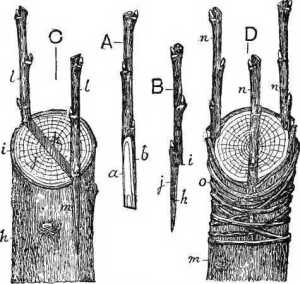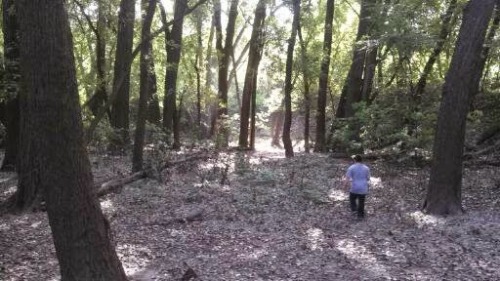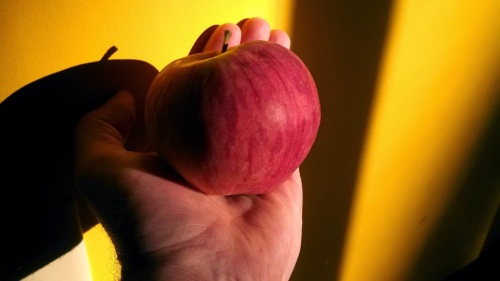In the Beginning
 The Earth is an old place. Roughly 4 and a half billion years old is the date agreed upon by scientist. Starting out as an orbiting cloud of dust, rocks, and ice that eventually came together with the help of the gravitational pull of our sun, the Earth has had many makeovers and changes throughout the long eons.
The Earth is an old place. Roughly 4 and a half billion years old is the date agreed upon by scientist. Starting out as an orbiting cloud of dust, rocks, and ice that eventually came together with the help of the gravitational pull of our sun, the Earth has had many makeovers and changes throughout the long eons.
Volcanic activity, tectonic shifts, comet and meteor strikes, erosion causing weather patterns, the forces of water and rain, climate change, and biological protagonists like fungi, plants, animals, and humans have all played a role in the constant evolution of our planet. From the rise of mountain ranges, the carving of river valleys, the spread of deserts, the birth of a forest, or the extinction of a species, the Earth has had many stories to tell. Each eon a chapter with its own characters, settings, and plots.
About 2 and a half billion years ago the first life forms began to appear in the fossil record. Starting as single celled organisms, life progressed throughout the millennia changing and adapting with the earth. Slowly but surely, life forms grew more complex. Starting with bacteria and simple fungi that could break down inorganic rocks and minerals (and eventually organic materials like plants), other life forms figured out how to create their own food using the power of the sun (photosynthesis in plants and certain types of bacteria), and yet other life forms (animals and insects) learned how to survive by consuming plants, fungi, bacteria, and other animals! The cycle of life was well under way.
This dance of evolution has spanned the ages with the different characters (bacteria, fungi, plants, and animals) trading places of importance countless times over, always with the sole intent of filling open niches and reaching some kind of habitable equilibrium. Often times this equilibrium was achieved and sustained for long periods of time (sometimes for hundreds of millions of years), but eventually some disruption or imbalance occurred signalling the end of one age, and the dawning of another. Geological events and mass extinctions have often been the benchmarks for defining these different ages of the earth.
Some of these times are more well known than others. Some are downright popular, such as the Jurassic period of the Mesozoic era (the age of reptiles), when the dinosaurs ruled the earth. The Jurassic period lasted for more than 50 million years, and that only constituted a portion of the whole Mesozoic era. It is a great illustration of how old the earth actually is, how slow time can move, and how young of a species we humans actually are.
The fossil record puts the age of modern humans at around 200,000 years old. A long line of monkeys, apes, and gorillas share our direct evolutionary path. But somewhere around 40,000 years ago, humans ruled supreme, beating out the last of our closest relatives, the neanderthals, who had walked the earth for close to a million years previous to us humans. Since then, it’s all history as they like to say!
In that time, humans have risen to the position as the number one, global apex predator that has been shaping, transforming, and dominating the Earth, its landscapes, and all of its other inhabitants for at least the last 10,000 years. When humans mastered the skills of both language and fire, we ceased being just another primate amongst the natural world, and instead went on to create cave paintings, songs, religions, government, and so many other visible and invisible structures that are now inseparable from the human experience.
Since those early days, we have gone on many adventures and have built legacies that have lasted millenia. Cultures come and go, but their footsteps make up our history, and the biggest and easiest trail we can follow is the one that has shaped the earth and humans the most, agriculture.
The First Green Revolution

Around the close of the last ice age, 10-12,000 years ago, a radical experiment began to take place in how humans inhabited their landscape. The earth entered an interglacial state and the climate slowly began to change and warm, thus giving us different options on how we could live with the land. Agriculture did not happen overnight, but rather it played out over seasons and centuries, adapting and refining itself, and taking us and the land with it.
Those who lived through those early days of agriculture could not have known how the world was about to change. In those 10,000 years since the first horticultural societies gave way to an agricultural revolution that changed the world, humans have shaped and molded the planet in almost all aspects. Our tinkering is evident almost anywhere you look, whether with the naked eye or with a microscope.
We have logged the planet of almost all its old growth forest and lost billions of tons of precious topsoil to the wind and rain. Along with the loss of the trees and our soils, comes a release of millennia’s worth of stored carbon that now finds itself freely traveling through the atmosphere. Our air and waters have been polluted from erosion and industry, we divert rivers, move mountains, and change the lay of the land in unprecedented ways. Our oceans have been overfished, our prairies overturned. Our fingerprints are everywhere.
There are millions of tons of plastic floating in the ocean. There are thousands of active landfills in America today, and over 10,000 retired ones, all evidence of mans presence, our modern day midden piles. Every disposable product, every plastic trinket, every outdated or broken do-dad has a traceable path to a real place somewhere on the Earth.
All these creations, whether a paper napkin or a pickup truck starts in a place where a natural resource can be found. Trees and other natural fibers, minerals, metal ores, fossil fuels, water, and agricultural products can all be found in any number of these common everyday products and goods that are used throughout the world.
People and animals are displaced from their native lands and habitats to make way for the logging, mining, growing, and processing of these materials that are needed for all these industrial products. There are now very few places left on our Earth that have not felt the impact of man, and the “progress” that is left in our wake. But the journey of those first farmers and city builders is still our story. It is a story that is always looking to grow bigger and wealthier. It has cast humans as the main characters, and everything else, whether an old growth tree or a northern white rhino is a disposable extra. This is life in the anthropocene!
Life in the Anthropocene
 The anthropocene as defined by wikipedia as “an informal geologic chronological term for the proposed epoch that began when human activities had a significant global impact on the Earth’s ecosystems.” The term was coined by scientist Paul Crutzen in the year 2000 and has been gaining acceptance throughout the scientific community ever since.
The anthropocene as defined by wikipedia as “an informal geologic chronological term for the proposed epoch that began when human activities had a significant global impact on the Earth’s ecosystems.” The term was coined by scientist Paul Crutzen in the year 2000 and has been gaining acceptance throughout the scientific community ever since.
Until Crutzen proposed the idea of the anthropocene, the world had been living in (and still technically is) what is known as the holocene, the geological age starting at the end of the last ice age. While this distinction is still being debated, for the purpose of this essay I will follow Crutzen’s thinking and accept the anthropocene as the new geological age defined by man and his impacts on the natural world. Whether it is mining, logging, agriculture, pollution, or any of the other myriad activities that bear the fingerprints of man, these are all defining characteristics of the anthropocene.
So where does that leave us? If the anthropocene is our legacy, one that first started because of fire, language, and religion and continued with the domestication of the living landscape, and climaxing in industrial (agri)culture, resource extraction, suburban sprawl and biological extinction, than it is a legacy based on death. The Anthropocene by its own definition requires the disruption of the earth’s ecosystems for modern man to survive.
If our time on this good Earth is being defined by the natural wealth we have plundered, the pollution and garbage we have created, and all of the land we have stolen and destroyed, than it is not only a legacy of death, but also one to be ashamed of as well. What do we have to carry forward? What stories will be told about us? What will we ultimately be remembered for?
If the anthropocene is the defined theme of our collective narrative, are we subject to a self created demise? If we stay on the same path that we are currently on, are humans to expect a rough road ahead? For all of our technological advances and mastering of the Earth, the fact remains that we still live on a finite planet that is ruled by limits to how much we can take and how much we can pollute before global ecosystems, weather patterns, and biodiversity begin to change and ultimately collapse, thus affecting the project we call civilization.
If humans are to move into the future, a future that still includes the basic tenets of modernity for all who want them and need them, then we need to radically shift the way we inhabit our landscapes and redefine what it means to be a human civilization in the 21st century. That redefinition will be less of a revolution, and more of a complete paradigm shift. If the anthropocene has been based on theft, destruction, and the ill intentioned manipulation of the natural landscape and its inhabitants for an ever growing economy, than this paradigm shift will have to include principles, ethics, and actions that are the antithesis of those that are symptomatic of the anthropocene.
For too long our mark(s) on the land and ecosystems of the earth have been those of a selfish landlord, and not those of a humble steward preserving our historical and cultural commons. Until we can begin to move away from these most basic and underlying habits of greed and dominion over others, we are doomed to keep repeating the cycle of destruction for profit that we are stuck in.
Until we as a society can divorce ourselves from the greed and savagery that is used to grow the profits that keep the wheels of “progress” moving, we will forever remain under those wheels, being ground up and used as fertilizer for growing the economy. At some point we must face the truth that the planet does not care about any economy other than the economy of nature, the flow of energy that is the living earth.
While it may seem that I am advocating for the dismantling of modern civilization, nothing is farther from the truth. It has taken me many years to arrive at this conclusion, but I do think it is possible for humans to coexist, and most importantly, care for this planet at the same time. Part of the solution lies in the way we view life and our time we have here. At some point in our story we no longer gave thought to the generations that are to follow in our footsteps, and focused solely on the now. It was no longer required of us to think about how our actions could affect life generations from present day. We were now accountable for nothing but our own personal desires and instant gratifications.
But when we begin to hold ourselves accountable for our actions, it is possible to see how we can impact the future. If in every decision we leave room for the future to have its say, than it is less likely that we would continue to clear cut forests, move mountains, and knowingly pollute our drinking water just for a quick buck or a desperate energy fix.
When we consider our grandkids’ grandkids in the decisions we make now, we begin to realize that every aspect of how we live needs to change. We can no longer be short term takers, but instead we have to become the guardians and caretakers of our land bases so that there is something of abundance, substance and beauty available for those who follow in our footsteps.
We are at a place in history where we have never been before. We have more accumulated knowledge and proven, appropriate science and technology available to us than any other humans to come before us. We have the ability to keep people warm when it is cold, dry when it is wet, and fed when they are hungry. We have the resources to educate people and the social safety nets to insure a basic level of comfort for all those on the planet. We also have a history and a shared story that defines what it is to be a human. It is this last point that is most important. If we can reconnect with what it means to be a fully mature human, we will see that we have an important place in nature.
Towards the Permacene
 This is the paradigm shift I propose. It is a shift and a transition to a new geologic age, where with each passing generation we reduce our footprint. The amount of evidence of our existence is carried forward not by the trash and destruction we leave behind in our wake, but in the books we continue to write, the songs we continue to sing, the communities we continue to build, and land that we help to heal. This journey is underway, and has been slowly since the beginning, but we are at a critical point in human history.
This is the paradigm shift I propose. It is a shift and a transition to a new geologic age, where with each passing generation we reduce our footprint. The amount of evidence of our existence is carried forward not by the trash and destruction we leave behind in our wake, but in the books we continue to write, the songs we continue to sing, the communities we continue to build, and land that we help to heal. This journey is underway, and has been slowly since the beginning, but we are at a critical point in human history.
Moving into the future as a unified species will only continue if we face our history. Human history is filled with tragic abuses and genocides of peoples, animals, plants, and landscapes. Our cultural and biological diversity has been decimated by the fossil fuel enhanced advancement of industrial civilization. Countless characters of nature have been swallowed by the pit of extinction, and many more are on the edge of falling in. If we turn our backs on what has been lost and forget those stories, than we cannot move forward. It is the ones that are already gone that must be a reminder to us as we move into the future that we must move forward with as much cultural diversity and biodiversity preserved, protected, and regenerated as possible.
Our roles as stewards must extend to as many humans that calls this planet home. When people have a real physical connection to a land base and a community of friends and families to share it with, than our jobs as earth stewards becomes easy because we are all working towards the same goal. While the role and duties of earth stewards will vary from landbase to landbase and one community to another, the underlying ethics and principles that guide this endeavor are universal and are intrinsic in the transformation from just being a private citizen to a steward of the commons!
As we begin to renounce our citizenship to the anthropocene and begin embracing our role as stewards of the Earth, all aspects of our lives will begin to change. When we are rooted in strong communities and land bases, using technology appropriately, and asking ourselves how our actions will impact future generations, the foundations of greed and domination that rule the world will begin to crumble. As we begin to regenerate landscapes and communities, the corporate overlords and bureaucrats will find themselves unwelcome in more and more places and eventually cease to be. But this will only happen where communities are united, diverse, and have a physical connection to a landbase that they can call home. These communities, interconnected by their diverse patchwork of skills and trades, seasonal celebrations, trade and migration routes, spiritual beliefs, and the passing of information will have to find a human commonality that celebrates our diversity and uses that as a unifying force!
As history shows, we are a young species. We are a species that is full of flaws and destructive selfishness. But we are also adaptive and creative and occasionally compassionate, three traits that have made possible our evolutionary advances. So while we have perfected war and hatred and the wholesale destruction of our living planet, we also write poetry and songs, celebrate with family and friends, and have a love so deep that somehow, we still find we have roots that are just waiting to find a place to dig into, a place to call home!
So here we are at a cross roads. We have a choice to keep doing what we are used to, and most likely end up in a bleak and poor world. One that is gutted of all but humans and the strongest and most noxious of weeds. Or we can bravely step into the future planting trees and building communities and carrying on this great project we started well over 200,000 years ago. We can take the next step in our evolution, a step towards the Permacene. Peace and Cheers.
Read Full Post »
 Fruit tree cultivation has been a part of human history for thousands of years. Since before records, farmers and gardeners across the globe have traditionally incorporated fruit trees into their landscapes.
Fruit tree cultivation has been a part of human history for thousands of years. Since before records, farmers and gardeners across the globe have traditionally incorporated fruit trees into their landscapes. The cleft graft is a great place to start grafting due to its simplicity. All it requires is a centered, vertical slice down the rootstock (creating a cleft), and making two identical cuts on either side of the scion wood basically turning it into a slim wedge. The scion is then inserted and slid down into the cleft of the stock, all the while keeping the cambium layers lined up. The cleft graft allows you to use smaller scion wood with a bigger diameter stock. Once you are happy with the alignment of the cambium layers, wrap your graft with grafting tape or a binder, and then coat with wax or parafilm to help prevent desiccation.
The cleft graft is a great place to start grafting due to its simplicity. All it requires is a centered, vertical slice down the rootstock (creating a cleft), and making two identical cuts on either side of the scion wood basically turning it into a slim wedge. The scion is then inserted and slid down into the cleft of the stock, all the while keeping the cambium layers lined up. The cleft graft allows you to use smaller scion wood with a bigger diameter stock. Once you are happy with the alignment of the cambium layers, wrap your graft with grafting tape or a binder, and then coat with wax or parafilm to help prevent desiccation. The whip and tongue graft is a bit more difficult than the the cleft graft, but with a bit of practice becomes quite easy. The whip and tongue is prefered when the scion wood and your grafting stock are of almost similar diameters. It allows you to maximize cambium layer contact, and makes for a stronger graft union. Both the scion wood and the stock get a long diagonal cut that when put together, line up and form a new single branch or tree. The secret to a good whip and tongue graft is the second cut you do on each piece which creates the “tongue”. This tongue allows the two pieces to lock together, and because of the natural elasticity of the wood, this does a great job in helping the graft union to heal very strongly.
The whip and tongue graft is a bit more difficult than the the cleft graft, but with a bit of practice becomes quite easy. The whip and tongue is prefered when the scion wood and your grafting stock are of almost similar diameters. It allows you to maximize cambium layer contact, and makes for a stronger graft union. Both the scion wood and the stock get a long diagonal cut that when put together, line up and form a new single branch or tree. The secret to a good whip and tongue graft is the second cut you do on each piece which creates the “tongue”. This tongue allows the two pieces to lock together, and because of the natural elasticity of the wood, this does a great job in helping the graft union to heal very strongly.






































